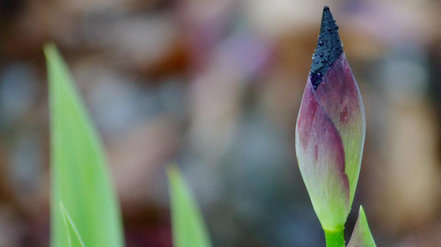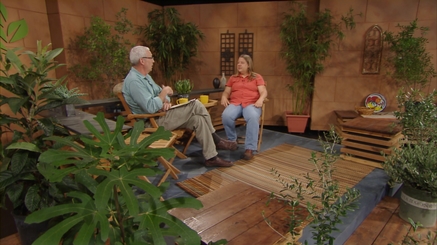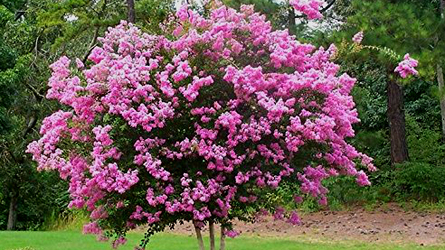For a low-maintenance ornamental tree, you cannot beat the good
old crape myrtle. This wonderful flowering tree or shrub (depending
on the variety) provides three seasons of color without a lot of fuss
or maintenance.
They bloom for months on end, and they come in any size you could
imagine. Once established they can hold up with our native tree species
during even the most prolonged droughts. Vibrant color and water
conservation rolled together into one beautiful tree.
Muskogee, for example, grows 25 - 30 feet high, and blooms for up
to four months! Its blossoms are light-lavender and have a strong
resistance to powdery mildew. Its fall leaf color is red and yellow and
in winter its bark is grey and pinkish-brown.
Another outstanding crape is Natchez. This white flowering beauty
grows from 25 to 30 feet and has the second longest bloom period of
110 days.
Its fall leaf color is red-orange and its winter bark color is cream-
cinnamon brown. Natchez is resistant to diseases, and is consid-
ered the benchmark that all other varieties are compared to. For a
dwarf tree, one of the best is Victor. This dark red variety grows to
4 to 5 feet and blooms for 85 days.
For mid-size trees, those growing from 8 to 12 feet there is Siren Red,
Pink Velour, Catawba (purple), and Acoma (weeping white).
For trees between 15 and 20 feet there is Dynamite (deep red), Red
Rocket (red), and Tuscarora ( coral red to dark pink).
And for truly shade size trees, 25 feet and up, along with Muskogee,
Natchez – there’s Basham’s Party Pink.
The crape myrtle (Lagerstroemia indica) has been in the South since
they were first introduced from Asia in 1747. Since that time, hundreds
of colors and heights have been bred.
In the mid 50s, the Japanese crape myrtle (Lagerstroemia faueri)
arrived and an extensive breeding program began. Horticulturalists
began to mix the color variations of the Asian crape myrtle with the
disease resistance of the Japanese varieties.
The Japanese crapes also had trunk color attributes and greater cold
tolerance. They could now be planted farther north.
As these amazing plants go through their amazing bloom cycle, we
should all give thanks for the bright colors they bring to our landscapes
during the upcoming harsh summer months.
Happy gardening everyone!




